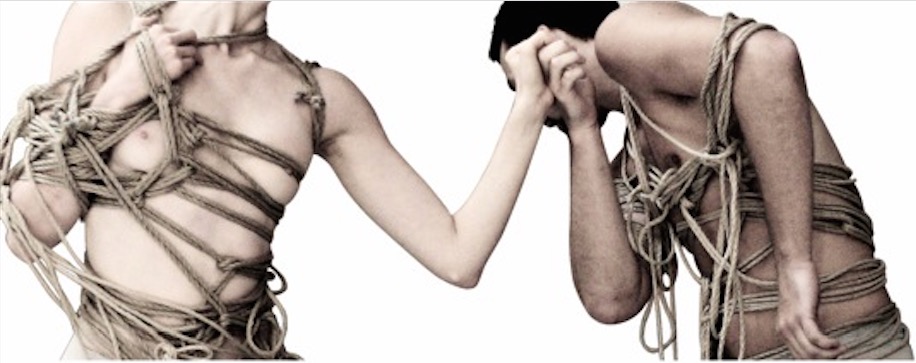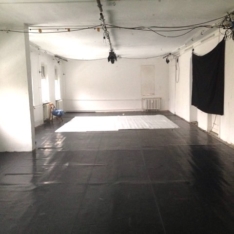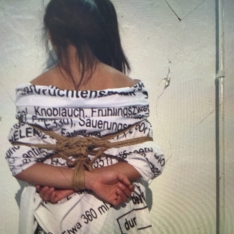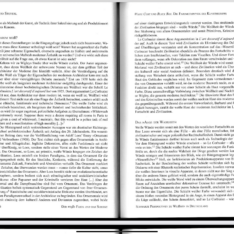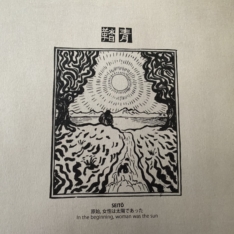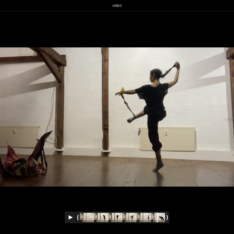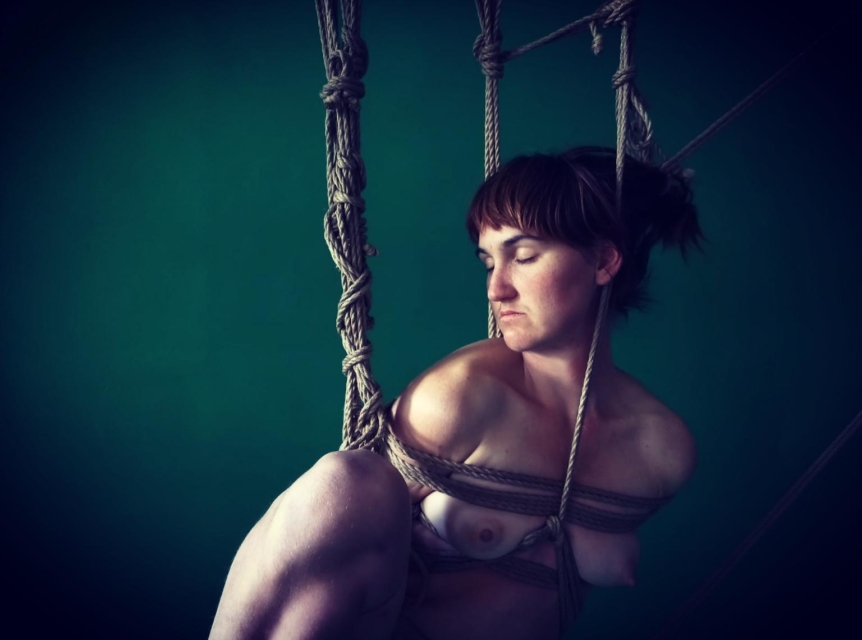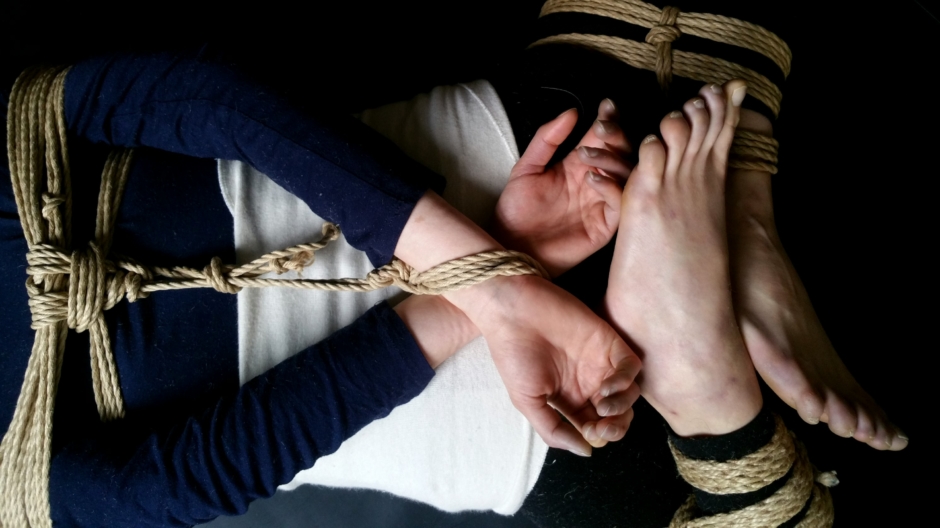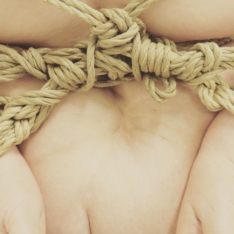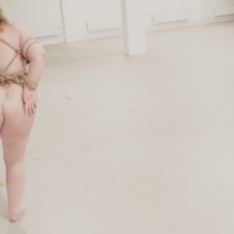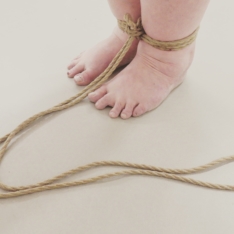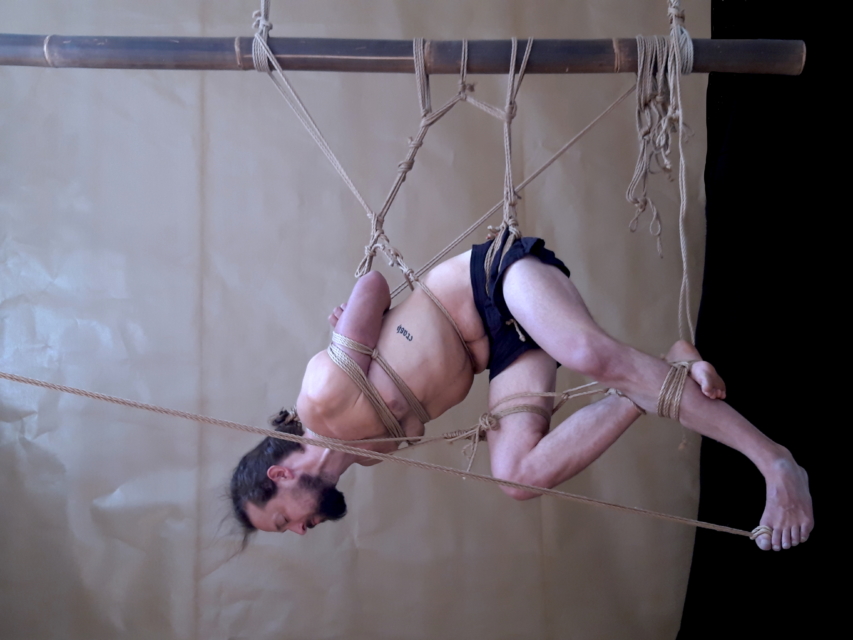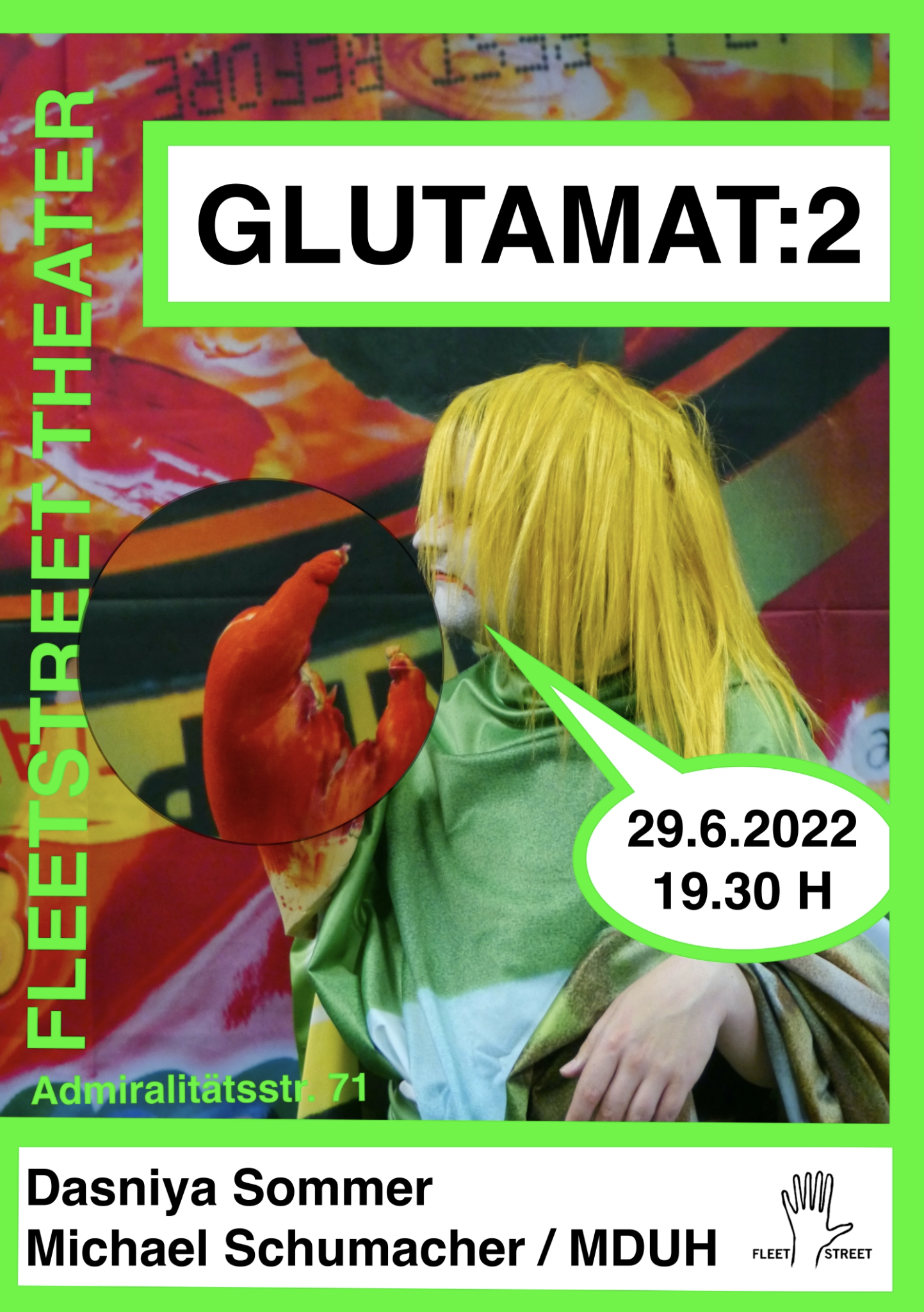
Mit ihrer ersten gemeinsamen Kollaboration Gluatamat:2 erarbeiten die Berliner Choreographin und Tänzerin Dasniya Sommer und der Hamburger Performer Michael Schumacher ein so persönliches wie sinnliches Duett. Sommers tänzerischer Umgang mit der japanischen Bondagevariante Shibari und Klassischem Ballett trifft dabei auf das virtuose Sprech- und Sprachverständnis des langjährigen Mitglieds der inklusiven Performancegruppe Meine Damen und Herren.
Zusammen kreieren die beiden eine so abstrakte wie düster-humorvolle Choreographie. Verkaufsverpackungen und individuelle Schicksale gesellschaftlich Randständiger werden metaphorisch auf irritierende Weise verknüpft. Bewusst spielen die beiden mit einem individuellen Verständnis von Zeit. Der zusammen gesponnene Erzählfaden gibt den Takt ihres tänzerischen Rhythmus vor. Zärtliche Shibari Meditationen wechseln sich ab mit unterspannten Crip Time Duetten und absurden Ritualen.
Parallel entsteht aus großformatigen Drucken, Bambusstäben und Juteseilen eine begehbare Installation, deren grelle Ästhetik gleichermaßen mit kapitalistischem Genussversprechen und familiärer Geborgenheit spielt.
Ihre Abschlusspräsentation im Fleetstreet Theater am Mittwoch 29. Juni 2022 um 19.30 Uhr. Die Bar ist ab 19 Uhr geöffnet!
Admiralitätsstr. 71
20459 Hamburg
